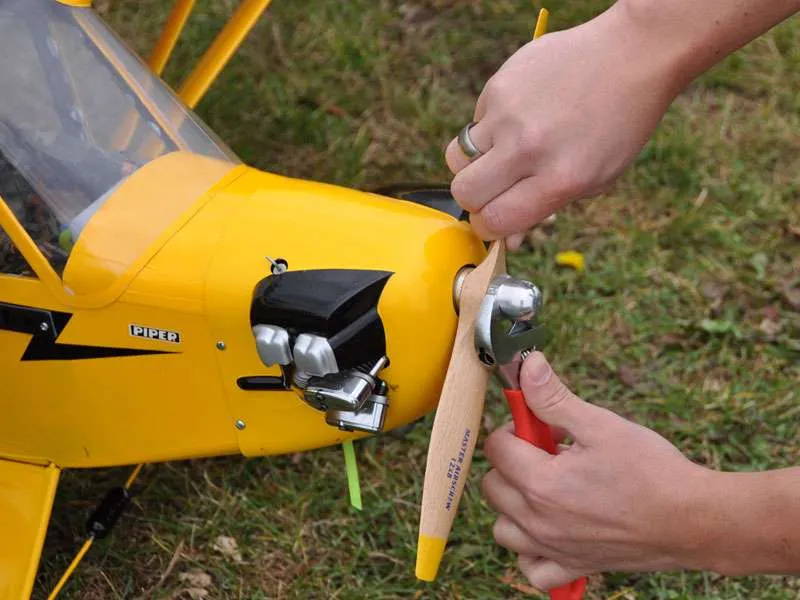Join Our newsletter
Subcribe to get information about products and coupons

Beginners Guide on How to Start Your RC Helicopter: Essential Components and Tips!
Flying an RC helicopter can be a challenging yet exhilarating experience. However, for beginners, getting started with these aviation machines can be a little overwhelming. The good news is, with the right guidance, anyone, including you, can quickly learn to fly an RC helicopter. You need the essential knowledge, tools, and confidence to succeed in this hobby. In this post, we will guide you through all the necessary components, including the RC Transmitter, budget helicopters, chargers, batteries, and tips to take off and fly safely.
1. RC Transmitter.
The RC transmitter is the primary device used to control an RC helicopter's movements. The transmitter sends signals to the receiver on the helicopter. It is essential to get a high-quality transmitter that fits your budget and has customizable functions.
Most transmitters come with four channels, but you may find more costly models that feature six or more channels. Besides, you need to grasp the basics of how to set up your transmitter before you start flying your RC helicopter.
TX16S is an excellent choice for its look, capability and price. Plus they offer multi-protocol which means you can fly as many models from different manufacturers as you want.

2. Budget RC Helicopters.
RC helicopters come in various models and price ranges, from less than $50 to over a thousand dollars. As a beginner, you don't need to break the bank on an expensive model. You can start with a basic model, which is cheaper than the advanced models.

For instance, the YX EC-129 is an excellent choice as a beginner's model, costing around $54.99. It has a durable design, which enhances stability and easy to maneuver.
EC-129 also provide its own transmitter, which is simple but enough for you to learn the basic.
As you progress more and more, you will need better or more channel of helicopter to suit your advancement. We suggest looking at XK helicopter line up with 6CH, durable, easy to fly heli, namely XK K100, K110, and K123
These helis are also come with their transmitter, and they are very capable when it comes to setting up intermediate 3D parameters for your heli.

3. Chargers and batteries.
Invest in a reliable charger and batteries. You don't want to run out of power when flying, so ensure that your batteries have enough juice for your flying session.

For budget chargers, we would recommend Hota for their inexpensive options, but your charger will grow as you progress, so a good choice from icharger wouldn't hurt.
However, you need to understand your charger and battery limits to prevent overcharging them or undercharging them. Also, check your batteries' voltage levels and ensure you don't fly when the voltage is too low.
4. Before you Fly.
Before you start your first flight, ensure you have read the manufacturer's instructions on setting up the RC helicopter. You need to inspect the helicopter and its components for any signs of damage that can hinder proper functioning.
Now, charge up your battery and check their voltage before each flight. We don't want you to loose your models or crashing into other people due to battery depletion.
Moreover, ensure you have enough space to fly the helicopter to avoid accidents and collisions. Finally, ensure that you are calm and focused before starting your flight.

5. Tips to fly safely.
Safety is a critical factor when flying RC helicopters. Here are some tips to ensure you fly safely:
- Follow local rules and regulations on flying RC helicopters.
- Only fly in designated areas or remote locations with no risk of damaging people or property.
- Don't fly the helicopter too high, or you may lose control over it.
- Always keep a distance from other people or persons.
- Only fly in good weather conditions.

Learning how to fly an RC helicopter can be a fun and rewarding experience, but it takes time, practice, and patience. You need to have a grasp of the essential tools, including the RC transmitter, budget helicopters, chargers, batteries, and safety tips to take off and fly safely. With the tips and guidelines outlined in this post, you can now confidently start your journey into the exciting world of RC helicopters. Remember, always prioritize safety, and keep practicing to better your flying skills over time.
Explore a selection of top-notch helicopters to embark on your thrilling RC adventure. These helicopters come equipped with transmitters, batteries, and chargers, so you won't have to break the bank to experience the joy of flight. Give one a try, see if it captures your interest, and only then take a plunge into the captivating world of RC helicopters!
Thanks for subscribing!
This email has been registered!